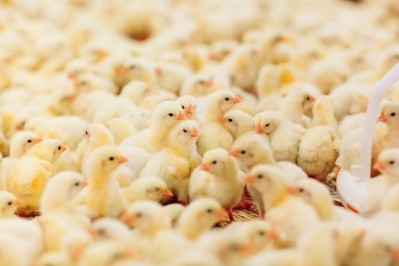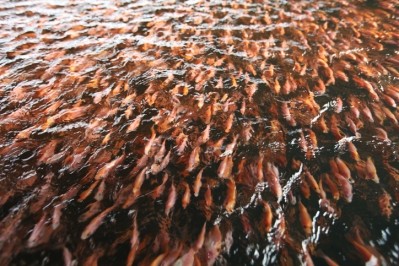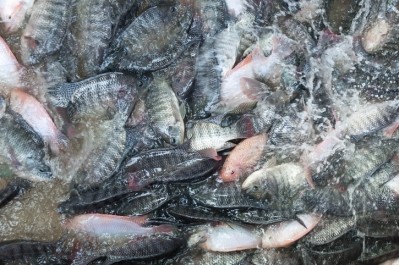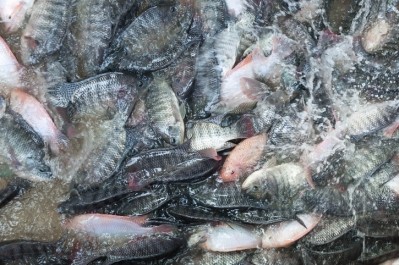Basil oil may boost tilapia growth
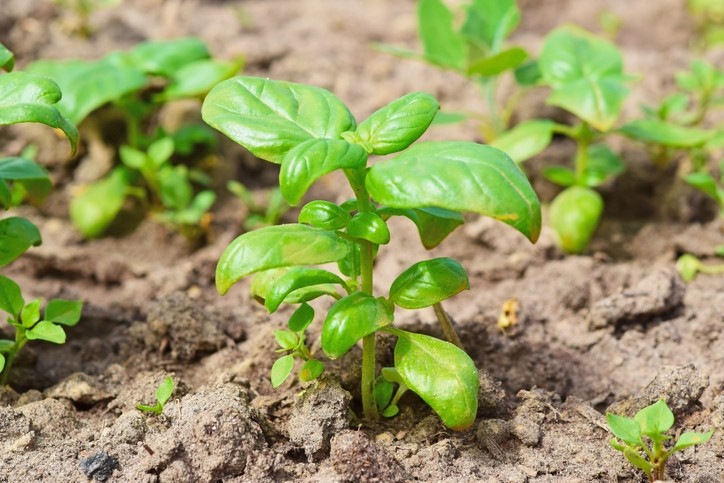
A Brazilian research team explored the use of the essential oil of ociumum basilicum (EOOB), or basil, in the diets of Nile tilapia and its influence on growth and as an antibiotic alternative.
They published their work in the journal, Aquaculture.
“The current study explores the possible effects of EOOB in the diet on the growth, survival, and health (biochemical and haematological responses, intestinal enzymes, lysozyme activity and antimicrobial activity against A. hydrophila) in Nile tilapia juveniles,” the researchers said.
The researchers found that adding 2mL per kg -1 to the diets of tilapia boosted growth performance and increased hematological elements, intestinal enzyme activity. Using higher levels of the feed additive lowered plasma triglycerides, glucose, hepatic glycogen and alanine aminotransferase (ALT), along with raising plasma total proteins and lysozyme post-infection activity.
However, fish survival following a disease challenge was not altered by the inclusion of the feed additive, they said.
“EOOB could be considered a food additive in Nile tilapia diets, showing benefits in growth, intestinal enzymes, lysozyme and hematological variables,” they said. “Despite this, the use of 1.0 mL EOOB kg diet−1 seems to be more suitable than 2.0 mL EOOB kg diet−1 since the latter may be related to liver damage.”
Disease challenge in aquaculture
Fish health can present a challenge to intensive aquaculture production, the researchers said.
“Nile tilapia (Oreochromis niloticus) is the most commercially cultured species in various regions of the world (FAO, 2018),” they said. “Tilapia farming, however, faces significant health issues, which culminate in mortality outbreaks.”
The intensification of “tilapiaculture” has generated increased health problems including bacterial infections, they said. Antimicrobials are often used to control pathogenic bacterial infections; however, the practice raises concerns about chemical residues in ecosystems, water and in the fish.
“There is a great interest in studies with new antimicrobials that contribute to the health of the fish, without causing damage to the environment,” they added.
Why add basil essential oil to tilapia diets?
Essential oils have shown some potential as health or growth-promoting feed additives that could be used in fish production, the researcher said. Some essential oils have been linked to a reduction of or a lessening of effects from bacterial infections.
Use of essential oils also does not generate the same concerns found with antibiotic use as oils are considered a “biodegradable alternative,” may be found locally and lack side effects, they said.
“Essential oils are secondary compounds consisting of active principles metabolized by plants; their therapeutic properties are due to the presence of monoterpenes and others volatile lipophilic compounds (Nakatsu et al., 2000),” the researchers said. “Previous studies on the usage of essential oils in fish diets have shown benefits such as improved weight gain, growth rate (Zheng et al., 2009; Acar et al., 2015), health (Saccol et al., 2013) and survival after A. hydrophila infection.”
Plants from the genus Ociumum are found in multiple countries, including Brazil, they said. Adding, “In folk medicine, sweet basil Ocimum basilicum has been traditionally used as antispasmodic, aromatic, carminative, digestive, galactogogue, stomachic and tonic agent (Marwat et al., 2011).”
“The essential oil of O. basilicum (EOOB) has substances with antimicrobial, antioxidant (Snoussi et al., 2016) and anaesthetic properties (Limma-Netto et al., 2017) in fish,” they said. The extract also has been found to improve growth performance in carp and gilthead sea bream.
However, little is known about the use of the extract in feed with Nile tilapia, they said.
Feeding trial highlights
In the feeding trial, juvenile Nile tilapia were raised for 60 days on one of five diets. Fish were acclimated for two weeks prior to the start of the trial.
The diets were designed to have “37.43% crude protein and 4,856 Kcal kg−1 digestible energy” and had an added amount of EOOB at 0, 0.25, 0.5, 1, or 2mL per kg diet-1, the researchers said.
Fish were initially fed for a 45-day period and weight gain (WG), specific growth rate (SGR), feed conversion ratio (FCR) were determined, they said. A sampling of fish on all diets was collected on day 45 to assess blood, liver and the intestinal tract.
Blood was checked for hematocrit (Hct), hemoglobin (Hb) concentration, mean corpuscular hemoglobin concentration (MCHC), ALT and levels of plasmatic cholesterol, triglycerides, total proteins, plasmatic amino acids along with lysozyme activity, hepatic ALT, intestinal amylase, lipase, protease, tyrosine and hepatic glycogen, they said.
On day 46, remaining fish were infected with Aeromonas hydrophila and tracked for an additional 15 days while fish received the same feeds, the researchers said.
Trial results
Overall, the researchers found that as more of the essential oil additive was included in the diet fish showed increased weight gain, final weight and SGR. However, it negatively influenced FCR in a linear manner.
Fish survival following the disease trial was not altered by the inclusion or amount of the feed additive used, they said.
“The dietary increase of EOOB proportionally decreased plasma triglycerides and glucose and hepatic glycogen and ALT and increased plasma total proteins and ALT and lysozyme post-infection activity in juveniles,” they said. But, levels of amino acids, intestinal protease activity, hematocrit and lysozyme activity before the disease challenge were similar for fish on all diets.
Adding increasing levels of the essential oil linearly expanded intestinal lipase enzyme activity along with hemoglobin and MCHC levels, they said. Intestinal amylase was higher in fish on the 1ml EOOB kg diet-1 feed than it was for control group fish.
Source: Aquaculture
Title: Evaluation of the effects of Ocimum basilicum essential oil in Nile tilapia diet: growth, biochemical, intestinal enzymes, haematology, lysozyme and antimicrobial challenges
Authors: E. de Souza, R. de Souza, J. Melo, M. da Costa, A. de Souza, C. Copatti
DOI: doi.org/10.1016/j.aquaculture.2019.01.052
